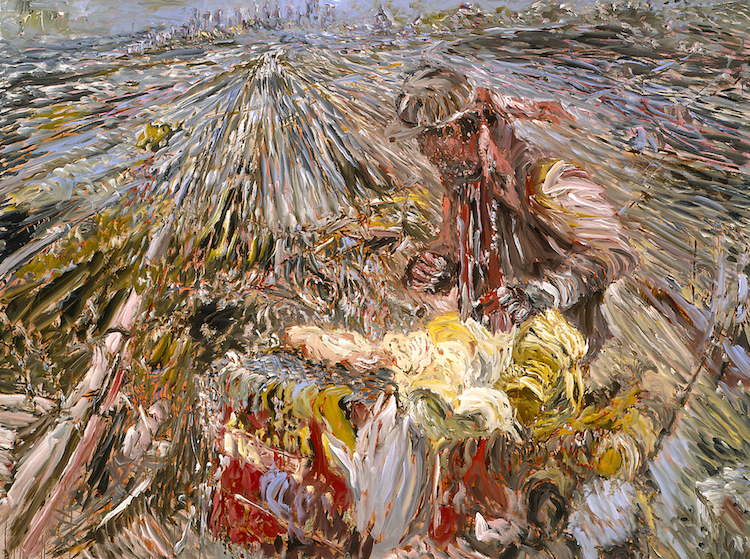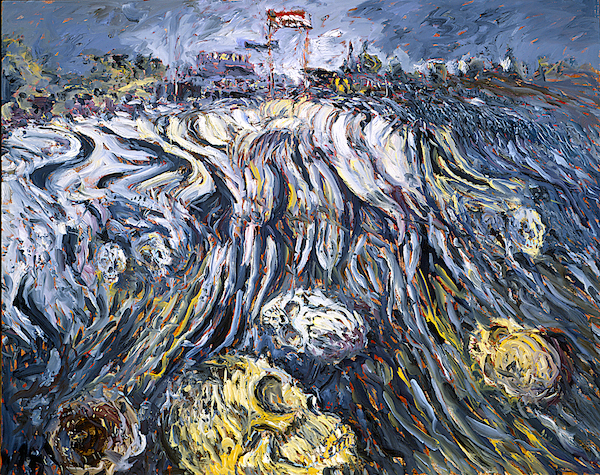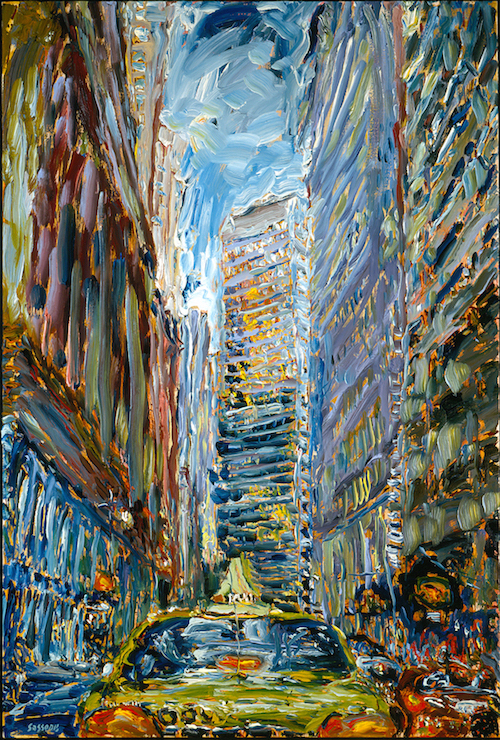“Master and Pupil” was an exhibition of paintings by Oskar Kokoschka, Silvio Loffredo, Marco Sassone that opened in 2002 at the Museo ItaloAmericano in San Francisco. In 2003, it traveled to the Cloister of Sant’ Agostino Museum in Pietrasanta, Italy. The following catalogue essay by Peter Selz describes the link between the three artists:

Marco Sassone (born in Campi Bisenzio, Tuscany, in 1942) and Silvio Loffredo had fathers who were painters and gave them their initial instruction. When Sassone was 25 years old, he decided to leave Florence and move to the United States, living at first in Los Angeles and coming to live and work in San Francisco in the early 1980s. He travels back to Italy every year to paint sparkling canvases in Venice and the Amalfi Coast. But, as can be seen in his recent “heads” (1996–2000), there is also a tragic aspect to his work. Done in pastel or oil, these anonymous portrait heads are based on black and white drawings, which the painter made from encounters with street people in San Francisco. He would listen to the stories of the downtrodden and homeless and sketch their faces. These are portrayals of isolated men and women with piercing eyes and solemn, thoughtful and troubled expressions. The series had its beginnings in 1990 with his suite of paintings of the Homeless, entitled Home on the Streets, which in turn, goes back to the compelling painting, Aftermath (1968), that was prompted by the great wreckage in Florence caused by the flood of 1966. Here we see a man, small and dark, silhouetted against the light of the street. He is scavenging the rubble, while another man walks slowly out of the devastated area — and out of the painting. It was at that time that the artist, who had studied with Loffredo at the Academy of Fine Arts in Florence traveled to and settled in California.

Homelessness, a condition which we have come to know too well in American cities, does not exist in European cities, except in wartime. The Italian painter, therefore, was astounded with what he encountered in San Francisco. He found the homeless a compelling subject for very powerful paintings, in which a fascinating effect is achieved by the contrast of the misery of the motif and the eloquence of the vigorous brushwork.
On his annual trips to Venice, the painter approaches the familiar canals, bridges and campi with a contemporary eye and brush. In fact, his palpable Expressionist stroke seems to replicate the movement and ripples of the waves. In many of his paintings a single color — red or blue — dominates the vertical composition. In recent pictures of Venice, such as Malinconia (1999) with the water flooding the campo, the whole canvas appears to be a vibrating surface.

Then, there are the paintings of San Francisco, his adopted city: the pull of deep perspective is pushed back by the tall building at the bottom of California Street in Yellow Cab (2000), and the cutting into space in Tunnel with Colors (1989) brings the three-dimensional illusion back to its two-dimensional picture plane. In many of the canvases we are very much aware of the layering of the paint and its material consistency.

A canvas like Chinese Reds (1990) in its scarlet color relates to the chromatic scheme of his teacher’s Angel of Death (1998), while alarming paintings like Marlboro Country (1990) with its human skulls spread in the foreground, or Coit Tower Night (1988) — a painting of deep blue water, a brown hill and a violent purple sky — all done with an agitated brush, elicit a fervent emotion, comparable to the sensations evoked by the canvases of Kokoschka himself.
— Peter Selz

